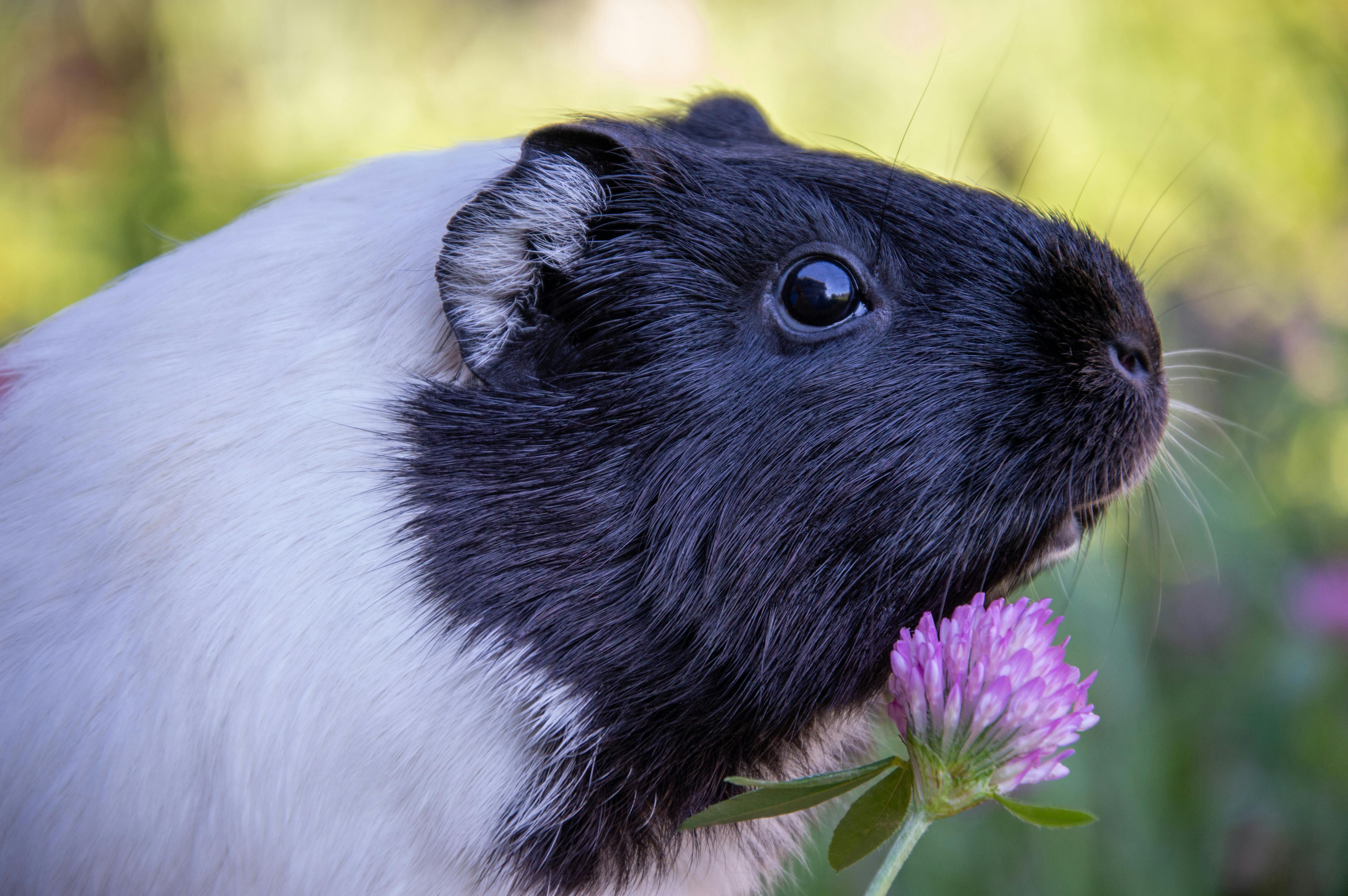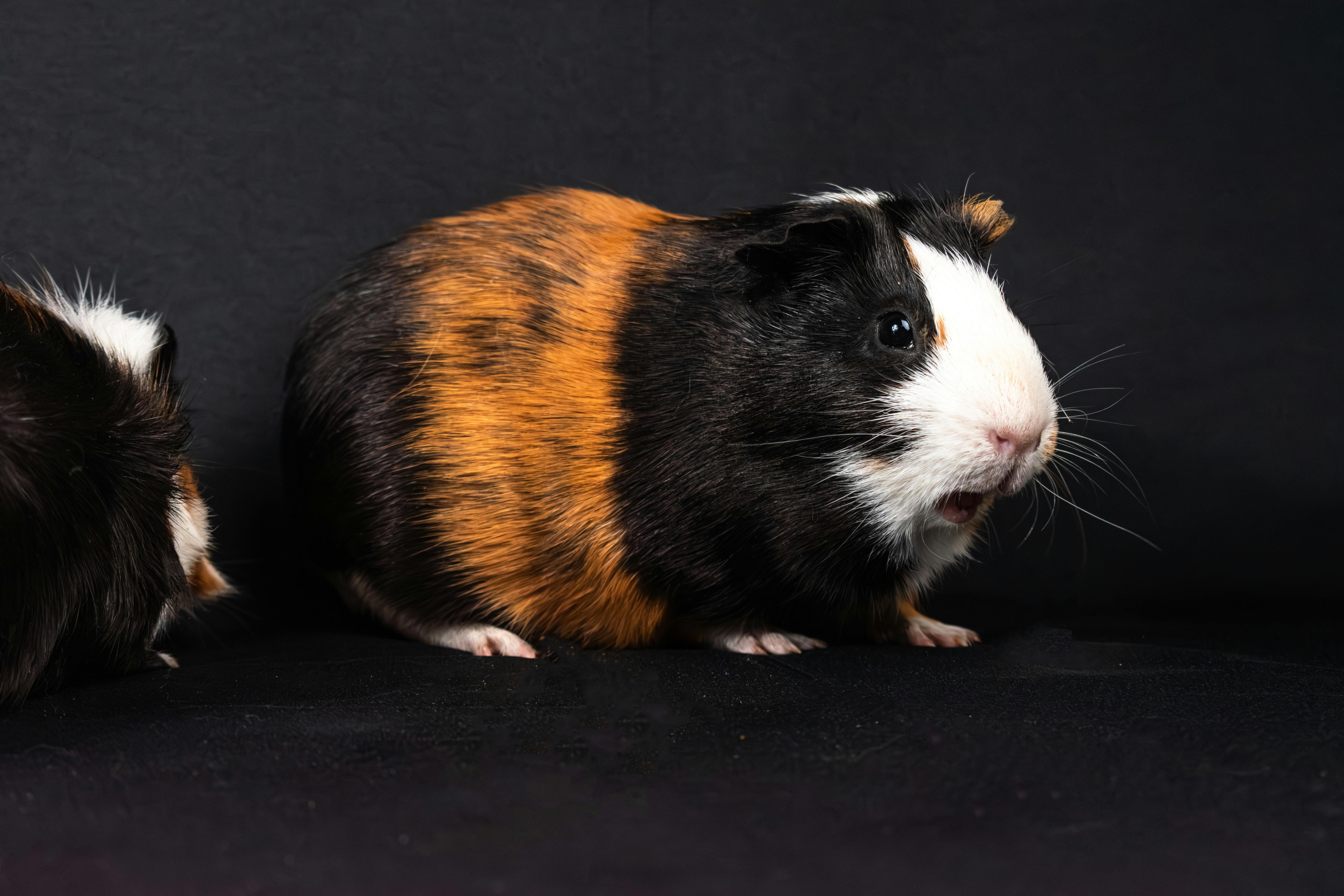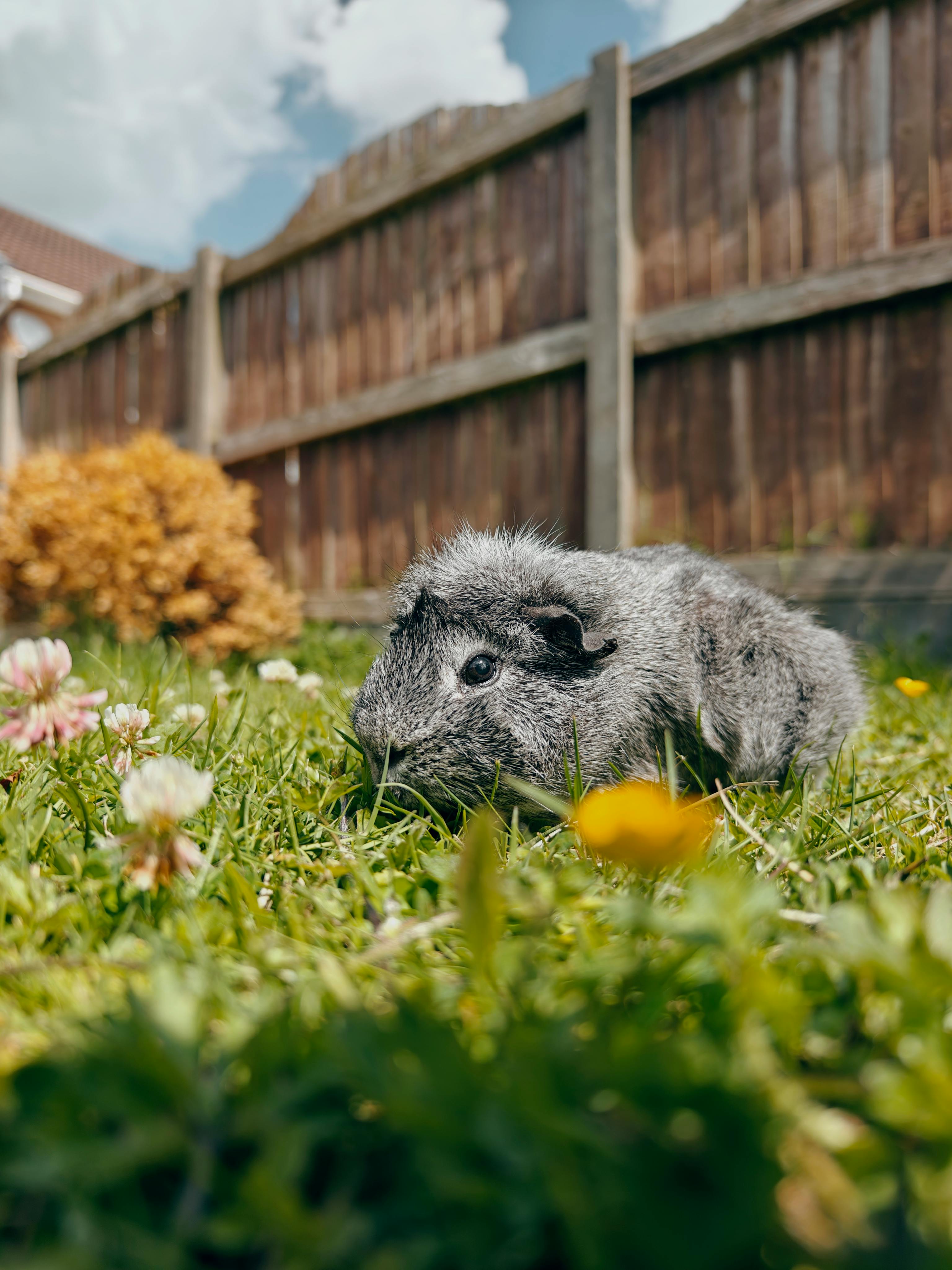Complete Guinea Pig Cage Setup Guide

Table of Contents
The Complete Guinea Pig Feeding Guide: Complete Nutrition Guide Cage Setup Guide: Creating the Perfect Home
Creating the perfect guinea pig cage is one of the most important aspects of guinea pig care. This comprehensive 2,000+ word guide covers everything you need to know about cage selection, setup, and maintenance to ensure your guinea pig has a safe, comfortable, and enriching environment. From size requirements to advanced enrichment options, this guide will help you create a home that promotes your guinea pig's physical and mental wellbeing.
Understanding Guinea Pig Cage Requirements
Before selecting a cage, it's crucial to understand what guinea pigs need to thrive:
Natural Behaviors to Accommodate
- Running and Popcorning - Guinea pigs need space to run and express joy
- Foraging and Exploring - Natural curiosity requires varied environments
- Hiding and Resting - Prey animals need secure hiding spots
- Social Interaction - Space for multiple guinea pigs to interact
- Territorial Marking - Areas for scent marking and claiming
- Exercise and Play - Physical activity is essential for health
Health and Safety Considerations
- Respiratory Health - Proper ventilation and clean air
- Foot Health - Solid flooring to prevent bumblefoot
- Dental Health - Space for natural wear and chewing
- Mental Stimulation - Preventing boredom and depression
- Temperature Control - Maintaining optimal temperature range
- Hygiene - Easy cleaning and maintenance
Cage Size Requirements: The Foundation of Good Care
Size is the most critical factor in cage selection. Guinea pigs are active animals that need significantly more space than many people realize:
Minimum Size Standards
- One Guinea Pig: 7.5 square feet (minimum), 10.5 square feet (recommended)
- Two Guinea Pigs: 10.5 square feet (minimum), 13 square feet (recommended)
- Three Guinea Pigs: 13 square feet (minimum), 16 square feet (recommended)
- Four or More: Add 2-3 square feet per additional guinea pig
Why Size Matters
Insufficient space leads to numerous health and behavioral problems:
- Obesity - Limited space reduces natural exercise
- Boredom - Lack of stimulation leads to depression
- Aggression - Cramped conditions increase territorial behavior
- Stress - Inadequate space causes chronic stress
- Poor Muscle Development - Limited movement affects physical health
- Behavioral Issues - Stereotypical behaviors and self-harm
Measuring Your Space
When planning your cage setup, consider:
- Available Floor Space - Measure the area where the cage will go
- Access Requirements - Space for cleaning and maintenance
- Future Expansion - Room to add more guinea pigs or accessories
- Traffic Flow - How the cage affects room movement
- Safety Zones - Distance from hazards like heaters or windows
Cage Types: Choosing the Right Foundation
Commercial Cages
Pros:
- Ready to use immediately
- Designed specifically for small animals
- Often include basic accessories
- Easy to clean and maintain
- Available in various sizes
Cons:
- Often too small for optimal guinea pig care
- Limited customization options
- Can be expensive for adequate size
- May not accommodate multiple guinea pigs well
- Accessories may be low quality
C&C (Cubes and Coroplast) Cages
Pros:
- Highly customizable and expandable
- Cost-effective for large cages
- Easy to modify and reconfigure
- Can create unique shapes and layouts
- Easy to clean and maintain
Cons:
- Requires assembly and planning
- May need additional accessories
- Can be time-consuming to build
- Requires some DIY skills
- May not look as polished as commercial cages
Custom-Built Cages
Pros:
- Perfect fit for your space and needs
- High-quality materials and construction
- Unique design and functionality
- Can incorporate built-in features
- Long-lasting and durable
Cons:
- Most expensive option
- Requires significant planning
- May need professional construction
- Difficult to modify later
- Time-consuming to build
Essential Cage Components: Building the Perfect Environment
Flooring: The Foundation of Comfort
Proper flooring is crucial for guinea pig health and comfort:
Solid Flooring (Recommended)
- Coroplast - Lightweight, waterproof, easy to clean
- Plywood - Durable, can be sealed for waterproofing
- Linoleum - Easy to clean, waterproof, various colors
- Acrylic - Clear, modern look, easy to clean
Why Avoid Wire Floors
- Bumblefoot Risk - Wire can cause painful foot infections
- Injury Potential - Feet can get caught in wire
- Comfort Issues - Uncomfortable for extended periods
- Cleaning Difficulties - Hard to clean thoroughly
- Behavioral Problems - Can cause stress and anxiety
Hideouts: Essential for Security
Guinea pigs need multiple hiding spots for security and comfort:
Types of Hideouts
- Igloos - Classic round hideouts, easy to clean
- Houses - Multi-room hideouts with doors and windows
- Tunnels - Long, flexible hiding and exploration areas
- Hammocks - Elevated resting spots (for confident guinea pigs)
- Natural Materials - Wooden houses, grass huts
Hideout Placement Strategy
- One per Guinea Pig - Plus one extra for choice
- Different Heights - Some elevated, some ground level
- Various Sizes - Small cozy spots and larger areas
- Strategic Positioning - Near food, water, and in quiet areas
- Easy Access - Guinea pigs should be able to enter/exit easily
Food and Water Systems
Proper feeding setup ensures your guinea pig gets adequate nutrition:
Food Dishes
- Heavy Ceramic Bowls - Tip-resistant, easy to clean
- Multiple Bowls - Separate dishes for pellets and vegetables
- Appropriate Size - Large enough to prevent competition
- Easy Access - Guinea pigs should reach food comfortably
- Regular Cleaning - Wash daily to prevent bacterial growth
Water Systems
- Water Bottles - Most hygienic option, easy to monitor
- Water Bowls - Natural drinking position, easier for some guinea pigs
- Backup Systems - Multiple water sources for reliability
- Fresh Water Daily - Change water completely every day
- Proper Height - Accessible but not too low
Hay Management
- Hay Racks - Keep hay clean and accessible
- Hay Bags - Hanging containers for fresh hay
- Multiple Locations - Hay available throughout the cage
- Quality Hay - Fresh, green, dust-free hay always available
- Regular Refilling - Check and refill hay multiple times daily
Bedding Options: Comfort and Hygiene
Choosing the right bedding is crucial for your guinea pig's comfort and health:
Paper-Based Bedding
Best Options:
- Carefresh - Soft, absorbent, dust-free
- Kaytee Clean & Cozy - Soft, highly absorbent
- Yesterday's News - Made from recycled paper
- Small Pet Select - Natural, unscented
Advantages:
- Highly absorbent
- Dust-free options available
- Easy to spot clean
- Comfortable for guinea pigs
- Good odor control
Fleece Liners
Advantages:
- Reusable and cost-effective long-term
- Soft and comfortable
- Easy to clean in washing machine
- Available in various colors and patterns
- Good for guinea pigs with respiratory issues
Considerations:
- Requires absorbent layer underneath
- Needs regular washing
- May need multiple sets for rotation
- Initial cost can be higher
- Requires proper setup to be effective
Bedding to Avoid
- Cedar Shavings - Toxic oils cause respiratory problems
- Pine Shavings - Can cause respiratory issues if not kiln-dried
- Cat Litter - Dangerous if ingested
- Corn Cob Bedding - Can cause digestive issues
- Straw - Too rough and can cause injuries
Enrichment and Toys: Mental and Physical Stimulation
Guinea pigs need mental stimulation and physical activity to stay healthy and happy:
Essential Toys and Accessories
- Tunnels - Various sizes and materials for exploration
- Chew Toys - Wooden blocks, apple sticks, hay-based toys
- Climbing Structures - Ramps, platforms, multi-level areas
- Foraging Toys - Puzzle feeders, treat balls, hay dispensers
- Interactive Elements - Balls, mirrors, safe household items
DIY Enrichment Ideas
- Cardboard Boxes - Safe, disposable hideouts and tunnels
- Paper Bags - Simple, safe exploration toys
- Toilet Paper Rolls - Stuff with hay for foraging fun
- Fleece Tunnels - Soft, washable exploration areas
- Natural Materials - Safe branches, untreated wood
Safety Considerations for Toys
- No Small Parts - Avoid items that could be swallowed
- Non-Toxic Materials - Ensure all materials are safe
- Regular Inspection - Check for wear and damage
- Appropriate Size - Match toys to your guinea pig's size
- Supervision - Monitor playtime for safety
Cage Location and Environment
Where you place your guinea pig's cage significantly impacts their wellbeing:
Ideal Location Characteristics
- Quiet Area - Away from loud noises and constant activity
- Stable Temperature - 65-75°F, away from drafts and direct heat
- Good Lighting - Natural light without direct sunlight
- Low Traffic - Not in high-traffic areas but still accessible
- Easy Access - Convenient for daily care and interaction
Environmental Considerations
- Ventilation - Good air circulation without drafts
- Humidity Control - Maintain 40-60% humidity
- Noise Level - Avoid areas with constant loud sounds
- Predator Safety - Away from other pets that might stress guinea pigs
- Escape Prevention - Secure location to prevent escapes
Multi-Level Cage Design
Adding levels to your guinea pig cage can maximize space and provide enrichment:
Design Considerations
- Ramp Safety - Gentle slopes with non-slip surfaces
- Guard Rails - Prevent falls from upper levels
- Access Points - Multiple ways to reach different levels
- Weight Distribution - Ensure structure can support guinea pigs
- Cleaning Access - Easy to clean all levels
Level Planning
- Ground Level - Main living area with food, water, hideouts
- Second Level - Additional space for exercise and play
- Loft Areas - Quiet spaces for resting and sleeping
- Connecting Areas - Ramps and bridges between levels
- Escape Routes - Multiple ways to move between levels
Cage Maintenance and Cleaning
Regular maintenance is essential for your guinea pig's health and comfort:
Daily Maintenance
- Spot Cleaning - Remove soiled bedding and waste
- Food and Water - Refill and clean dishes
- Hay Refilling - Ensure fresh hay is always available
- Health Checks - Observe guinea pigs for any issues
- Toy Rotation - Change toys to maintain interest
Weekly Deep Cleaning
- Complete Bedding Change - Replace all bedding
- Cage Washing - Clean all surfaces with safe disinfectant
- Accessory Cleaning - Wash all dishes, toys, and hideouts
- Inspection - Check for damage or wear
- Reorganization - Rearrange items for variety
Monthly Maintenance
- Deep Disinfection - Thorough cleaning of all surfaces
- Equipment Check - Inspect all cage components
- Bedding Evaluation - Assess bedding effectiveness
- Layout Review - Consider improvements to setup
- Safety Audit - Check for potential hazards
Common Cage Setup Mistakes to Avoid
Learn from common mistakes to create the best possible environment:
Size-Related Mistakes
- Too Small - Most commercial cages are inadequate
- Wrong Shape - Long and narrow is better than square
- Insufficient Height - Guinea pigs need vertical space too
- No Growth Planning - Not considering future additions
- Poor Space Utilization - Wasted space due to poor layout
Safety Mistakes
- Wire Floors - Can cause serious foot problems
- Sharp Edges - Can cause cuts and injuries
- Small Gaps - Guinea pigs can get stuck
- Unstable Structures - Can collapse and cause injury
- Hazardous Materials - Toxic or dangerous substances
Comfort Mistakes
- Insufficient Hideouts - Guinea pigs need multiple hiding spots
- Poor Bedding Choice - Uncomfortable or unsafe materials
- Inadequate Enrichment - Boring environment leads to problems
- Poor Location - Too noisy, drafty, or isolated
- Inconsistent Maintenance - Irregular cleaning causes health issues
Budget-Friendly Cage Setup Options
Creating a great guinea pig cage doesn't have to be expensive:
Cost-Effective Solutions
- C&C Cages - Build your own for less than commercial cages
- DIY Accessories - Make your own hideouts and toys
- Repurposed Items - Use safe household items as accessories
- Bulk Bedding - Buy bedding in larger quantities
- Second-Hand Items - Find quality used accessories
Prioritizing Expenses
- Size First - Adequate space is most important
- Safety Second - Ensure all items are safe
- Comfort Third - Focus on essential comfort items
- Enrichment Fourth - Add toys and accessories gradually
- Luxury Last - Save fancy items for later
Frequently Asked Questions
Q: How often should I completely change the bedding?
A: For most bedding types, change completely once per week. For fleece liners, change every 2-3 days. Always spot clean daily regardless of bedding type.
Q: Can I use a fish tank as a guinea pig cage?
A: Fish tanks are not recommended for guinea pigs. They provide poor ventilation, are difficult to clean, and don't allow for proper cage accessories. Guinea pigs need better air circulation than tanks provide.
Q: How many hideouts does my guinea pig need?
A: Provide at least one hideout per guinea pig, plus one extra. This gives them choice and prevents competition. Different types of hideouts (enclosed vs. open) provide variety.
Q: Is it okay to keep my guinea pig cage in the basement?
A: Basements can work if they meet all requirements: stable temperature, good ventilation, low humidity, and minimal noise. Ensure the area is well-lit and easily accessible for daily care.
Q: How can I make my guinea pig cage more interesting?
A: Rotate toys regularly, add new hideouts periodically, create different levels, provide foraging opportunities, and rearrange the layout occasionally. Guinea pigs enjoy variety and new experiences.
Conclusion
Creating the perfect guinea pig cage is an investment in your pet's health, happiness, and longevity. By focusing on adequate space, proper materials, essential accessories, and regular maintenance, you can provide an environment where your guinea pig can thrive. Remember that every guinea pig is unique, so be prepared to adjust your setup based on your pet's individual needs and preferences.
Ready to create the perfect home for your guinea pig? Start with the size requirements and work your way through each component. With patience and attention to detail, you can build a cage that will provide years of comfort and joy for your guinea pig!
## Related Reading If you found this article helpful, you might also enjoy: • [Guinea Pig Feeding Guide: Complete Nutrition Guide](/blog/guinea-pig-feeding-guide-complete-nutrition) - Master guinea pig nutrition with our comprehensive feeding guide covering hay, vegetables, pellets, and essential nutrients. These articles explore similar themes and can help deepen your understanding of the topic.

Comments (0)
Want to leave a comment?
Please Login or Register to join the conversation.